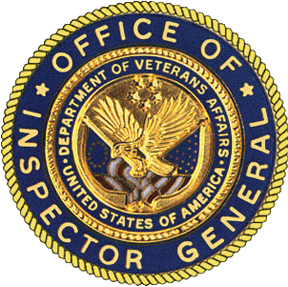The Causes and Conditions That Led to a $12 Billion Supplemental Funding Request
Report Information
Summary
In July 2024, VA informed Congress that the Veterans Health Administration (VHA) might need an additional $12 billion in funding in fiscal year (FY) 2025 to support medical care for the last three months of FY 2024 and all of FY 2025—primarily for community care, staffing, prosthetics, and pharmacy. In August, the OIG began reviewing the causes contributing to VHA’s subsequent request for additional funds, and in September, Congress passed legislation requiring the OIG to review the circumstances that led to VA’s announced funding shortfall.
The OIG found the FY 2024 President’s Budget, which included the advance appropriations for FY 2025, relied on outdated data and assumptions, including lower-than-actual costs for new medications and both direct and community care. Also, a legislative budget cap limited VHA’s ability to increase the FY 2025 advance appropriations, although leaders believed they could keep spending within funding limits by developing cost-saving options. The goals and options that emerged from a January 2024 financial sequester did not achieve the necessary cuts, such as reducing hiring and community care obligations. In August 2024, VA requested supplemental appropriations of $12 billion to cover medical care for the rest of FY 2024 and all of FY 2025. By November, VHA had revised this estimated shortfall to $6.6 billion for only the remainder of FY 2025. Congress passed a continuing resolution in mid-March 2025 to fund VA’s remaining FY 2025 medical care at $6 billion from the Toxic Exposures Fund.
VHA concurred with the OIG’s recommendations to review how VHA projects medical care budget needs (including staffing) and to develop an approach to form more accurate estimates; consider changes to allow program offices and other experts to weigh in on inputs for model projections; and conduct fiscal reviews at least quarterly to assess key cost drivers.
Review the Veterans Health Administration’s current methods, assumptions, and approaches used to project medical care budget needs in the annual President’s Budget to identify any gaps in the process or data limitations, and develop and implement a plan to strengthen the process.
Establish and implement a plan to review current processes and procedures for involving program offices and pertinent subject matter experts in developing the Enrollee Health Care Projection Model inputs for specific areas such as community care, staffing, pharmacy services, and prosthetics services, and formalize the expectations of their involvement in this process through guidance or protocols.
Develop and implement an approach to estimate medical care personnel needs and costs to increase the accuracy and reliability of information included in the annual President’s Budget.
Institutionalize a regular cycle of at least quarterly fiscal reviews among assistant under secretaries for health, network directors, and program offices that routinely assess key cost drivers and other areas of concern, such as staffing, community care growth, and local initiatives.
